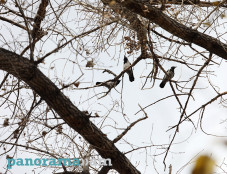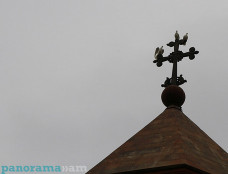
Polish side increases funding for excavations of Armenian monuments by 1.5 times
“In 2016 a necklace made of agate and gold beans was discovered during the excavations carried out in ancient urban neighborhood of Metsamor, Armenia. The finding dates back to the 12.11th centuries BC. Currently the necklace is in the cleaning stage,” Head of Armenian History Chair of State Pedagogical University of Armenia, Deputy Director in scientific activities of Service for the Protection of Historical Environment and Cultural Museum-Reservations SNCO, Doctor of Historical Sciences, Professor Ashot Piliposyan noted the aforesaid during today’s press conference. Panorama.am reports.
He also informed that 22 gold and over 1000 tin beans have been unearthed from one of the destroyed mausoleums of Metsamor.
“The findings are exceptional and very interesting. Notably there is no tin in the Armenian Highland and Middle East. They were allegedly brought from the abroad through eastern or western routes. The found materials have been sent to Munich to be studied. Soon it will become clear from where the tin was imported,” he noted.
In the words of A. Piliposyan it is already four years that the Metsamor excavations are conducted in cooperation with Institute of Archaeology of Warsaw University. This year the joint excavations will continue as well.
“I am convinced that this year the summary report of the four-year-long excavations will be published in the English language in Warsaw. Taking into account the fact that the Middle East faces hard times, the Polish side has increased the funds for the excavations of monuments in Armenia by 1.5 times,” he said adding that the Poland is also set to take a special drone to Armenia to film the monuments from above.
The Doctor of Historical Sciences also briefed on the result of the excavations of Armenia’s “Zorats Karer” (Armenian Stonehenge) archaeological site. The 2016 excavations discovered a large number of pottery fragments, iron weapons, remains of working tools, which, according to Ashot Piliposyan, come to prove that the monument dates back to the Iron Age. The excavations in the site will resume this year.
“We have also discovered 11-13 century pottery fragments and a glass bracelet. It turns out that during those centuries when there was a rather difficult situation in Armenia, these large mausoleums served as shelters for people during the invasions of the nomadic tribes,” he added.
A. Piliposyan hopes that more concrete facts will be revealed due to the “Zorats Karer” excavations which will allow to make historical and cultural claims.
Newsfeed
Videos






























